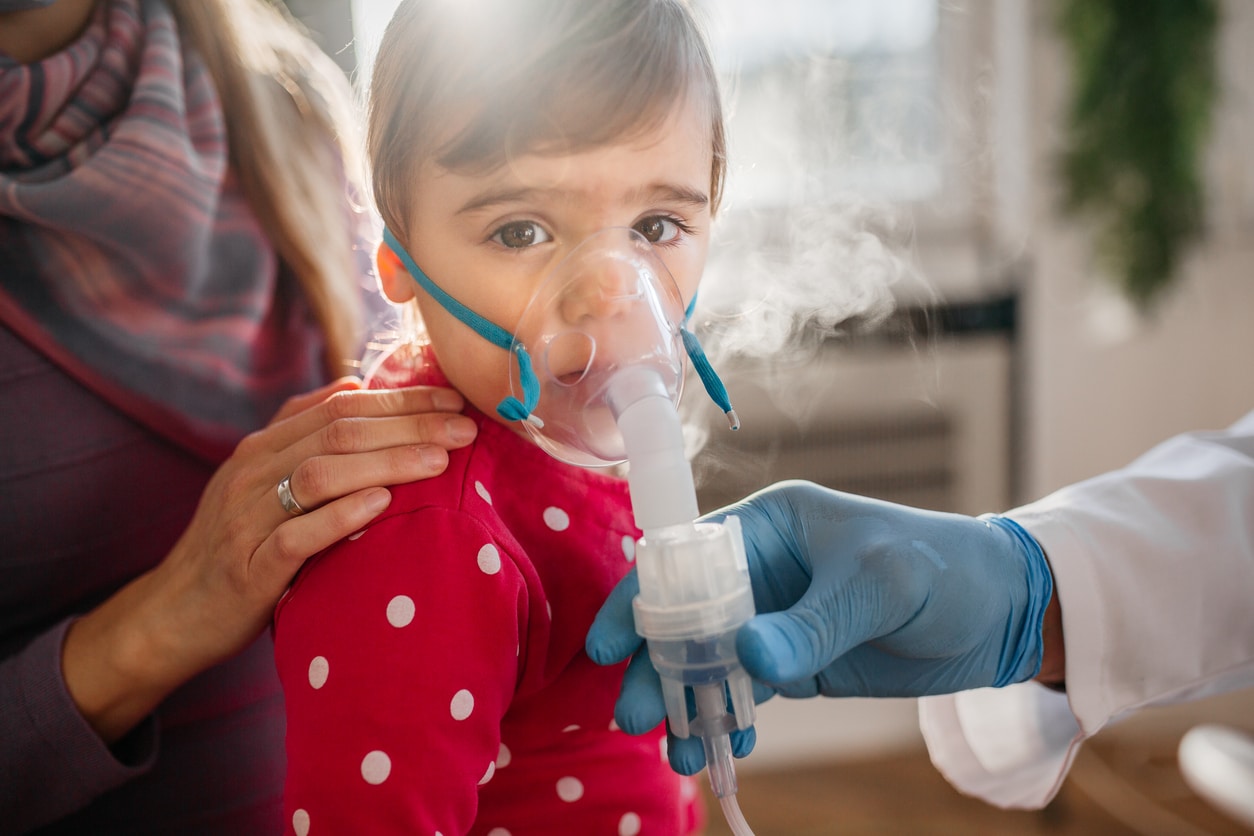Breathing disorders in children can be concerning for parents and caregivers. Understanding common pediatric breathing disorders and their treatments can help in managing these conditions effectively and knowing when to seek medical advice.
Common Pediatric Breathing Disorders
Asthma

Asthma is a chronic condition characterized by inflammation and narrowing of the airways, leading to difficulty in breathing. Symptoms include wheezing, coughing, chest tightness and shortness of breath. These symptoms can vary in severity and may be triggered by allergens, exercise, cold air or respiratory infections.
Treatment:
- Inhalers: Quick-relief inhalers (bronchodilators) help open up the airways during an asthma attack, while long-term control inhalers (corticosteroids) reduce inflammation and prevent symptoms.
- Medications: Oral medications like leukotriene modifiers can help manage asthma symptoms.
- Avoiding triggers: Identifying and avoiding asthma triggers, such as pollen, dust mites and pet dander, can help reduce the frequency of attacks.
- Asthma action plan: Developing an asthma action plan with a healthcare provider ensures that parents and children know what steps to take during an asthma attack.
Bronchitis
Bronchitis is the inflammation of the bronchial tubes, which carry air to the lungs. It can be acute or chronic, with acute bronchitis often resulting from a viral infection. Symptoms include a persistent cough, mucus production, fatigue and slight fever.
Treatment:
- Rest and fluids: Encouraging the child to rest and drink plenty of fluids helps in recovery.
- Medications: Pain relievers, fever reducers and cough suppressants may be prescribed to alleviate symptoms. Antibiotics are only effective if a bacterial infection is present.
- Humidifiers: Using a humidifier in the child’s room can help ease breathing by adding moisture to the air.
Sleep Apnea
Pediatric sleep apnea is a disorder where a child’s breathing is repeatedly interrupted during sleep. This can be caused by enlarged tonsils or adenoids, obesity or craniofacial abnormalities. Symptoms include loud snoring, gasping for air during sleep, daytime sleepiness and behavioral issues.
Treatment:
- Adenotonsillectomy: Surgical removal of the tonsils and adenoids is a common treatment for sleep apnea in children.
- Continuous Positive Airway Pressure (CPAP): For children who cannot undergo surgery or do not respond to surgery, a CPAP machine may be recommended to keep the airways open during sleep.
- Weight management: For overweight children, weight loss can significantly improve symptoms.
Knowing when to seek medical advice is helpful for managing pediatric breathing disorders effectively. You should consult a doctor if your child experiences:
- Persistent or severe breathing difficulties
- Wheezing or chronic coughing
- Frequent respiratory infections
- Snoring or disrupted sleep patterns
- Behavioral changes or daytime sleepiness
Immediate medical attention is necessary if your child shows signs of a severe asthma attack, such as extreme difficulty breathing, bluish lips or face, or if they are unable to speak or eat due to breathing problems.
Understanding these conditions and their treatments, along with recognizing when to seek medical help, is essential for effective management and ensuring your child’s well-being. If you have concerns about your child’s breathing, contact Pinnacle ENT Associates to schedule a consultation today.